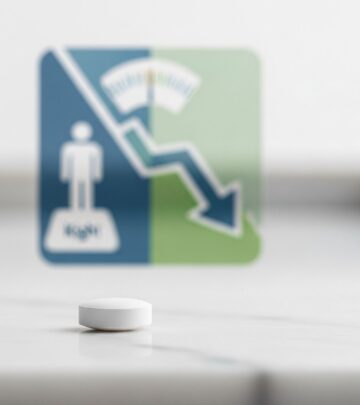Understanding the Ankle-Brachial Index (ABI) Test: Procedure, Preparation, and Results
A comprehensive guide to the ankle-brachial index test—purpose, procedure, preparation, and interpreting your results.

Ankle-Brachial Index (ABI) Test
The ankle-brachial index (ABI) test is a simple, noninvasive procedure used to assess the health of your arteries and diagnose peripheral artery disease (PAD). PAD occurs when narrowed arteries reduce blood flow to your limbs, often causing discomfort and increasing your risk of serious cardiovascular events, including heart attack and stroke. The ABI test compares blood pressure measured at your ankle and in your arm to evaluate the severity of blocked or narrowed arteries.
Overview
The ABI test is considered the first-line screening tool for detecting peripheral artery disease. It offers a quick, reliable, and noninvasive assessment of blood flow in your legs and can help determine whether further diagnostic procedures or treatments are necessary.
This test is commonly recommended for individuals who have symptoms of PAD, such as muscle pain or cramping in the legs during walking (claudication), or for those who have risk factors like smoking, diabetes, high blood pressure, or high cholesterol.
- Purpose: To detect and evaluate the severity of PAD.
- Noninvasive: No needles or injections are involved.
- Quick procedure: Typically completed in less than 15 minutes.
Why the Ankle-Brachial Index Test is Done
The ABI test is performed to determine if arteries in the legs are narrowed or blocked. Early detection of PAD is critical because:
- PAD increases risk of heart disease and stroke. Blocked leg arteries often indicate a higher likelihood of arterial blockages elsewhere, including those supplying the heart and brain.
- Leg pain while walking (claudication): PAD reduces blood flow to leg muscles, causing pain, cramping, or fatigue during activity.
- Identifies asymptomatic cases: Many patients with PAD experience no symptoms, making ABI valuable in detecting at-risk individuals before complications occur.
Your healthcare provider may recommend the ABI test if you have any of the following risk factors:
- History of tobacco use (past or present)
- Diabetes
- High blood pressure (hypertension)
- High cholesterol (hyperlipidemia)
- Atherosclerosis (restricted blood flow) elsewhere in the body
- Symptoms suggestive of PAD, especially leg pain with walking
- Unusually cool skin or hair loss on the legs and feet
Risks
The ankle-brachial index test is a low-risk and safe procedure. It involves the use of inflatable blood pressure cuffs to measure systolic pressure in the arms and ankles. Although the test is considered safe for almost everyone, some individuals may experience mild discomfort in the limb as the cuff inflates. This discomfort is brief and resolves once the air is released.
In rare cases, if you have severe leg pain or a wound, your healthcare provider may choose an alternative imaging test to prevent aggravating the condition.
How to Prepare for the ABI Test
- No fasting or special preparation needed: You do not need to fast, avoid medication, or change your routine before the test.
- Wear loose, comfortable clothing: This makes it easier for the technician to place blood pressure cuffs on your upper arms and ankles.
- Avoid nicotine/smoking for at least 2 hours before the test: Smoking can temporarily constrict blood vessels and alter the results.
- Rest before the test: You may be asked to rest quietly in a supine (lying on your back) position for 5–20 minutes to ensure blood flow is stable.
What to Expect During the ABI Procedure
The ABI test is performed by a trained technician or healthcare provider in a clinical setting. The procedure is painless and closely resembles the routine measurement of blood pressure.
Steps of the Test
- Resting period: You’ll typically rest for 5 to 30 minutes before measurements begin to allow your blood flow to normalize.
- Positioning: You’ll lie flat on your back on an examination table.
- Blood pressure measurement (arms): A cuff is placed on each upper arm, and blood pressure is recorded using a standard sphygmomanometer in tandem with a Doppler ultrasound device. The Doppler instrument detects and audibly amplifies the pulse in the brachial artery.
- Blood pressure measurement (ankles): Cuffs are then placed on your ankles. The technician or doctor uses the Doppler probe to locate pulses in two arteries at each ankle:
- Dorsalis pedis artery (on the top of the foot)
- Posterior tibial artery (behind the inner ankle bone)
- The cuff is inflated above your expected systolic pressure until the pulse disappears, then gradually deflated. The point at which the Doppler sound returns corresponds to your systolic blood pressure. The higher pressure of the two ankle arteries is used for calculations.
- Repeat for both legs: Measurements are taken separately for each leg. The arm with the higher blood pressure reading is used as the reference for the index.
- Optional treadmill exercise: In some cases, your provider may ask you to walk on a treadmill for several minutes and then repeat the ankle and arm measurements. This assesses how exercise affects blood flow and can reveal PAD not evident at rest.
Video Demonstration
Some clinics may provide instructional videos to demonstrate the ABI process and what you can expect during the appointment.
Understanding ABI Test Results
The ABI value is calculated by dividing the highest ankle systolic blood pressure by the highest brachial (arm) systolic blood pressure. The resulting ratio helps determine the presence and severity of PAD. Interpretation is as follows:
| ABI Range | Interpretation | Possible Next Steps |
|---|---|---|
| 1.00 – 1.40 | Normal. No significant arterial blockage. | Routine monitoring if symptoms develop. |
| 0.91 – 0.99 | Borderline. Could indicate early or mild blockage. | Consider an exercise ABI test or further evaluation. |
| < 0.90 | Abnormal. Peripheral artery disease is present. | Further diagnostic tests, lifestyle changes, medical therapy, or surgical options may be needed. |
| > 1.40 | Arteries may be stiff or calcified (often due to diabetes or advanced age). | Additional vascular studies (such as toe-brachial index) may be necessary for accurate assessment. |
- No blockage (1.00–1.40): Normal blood flow; unlikely to have PAD.
- Borderline blockage (0.91–0.99): Possible early PAD. Additional tests might be recommended, such as exercise ABI.
- PAD diagnosed (<0.90): Indicates narrowed or blocked arteries. The severity increases as the ABI value drops.
- Unusually high ABI (>1.40): May signal stiff arteries not compressible by the cuff and usually requires further testing.
Your provider will discuss your results with you and outline any recommended next steps based on the severity of your PAD and presence of symptoms.
After the Procedure
- No special precautions needed: The ABI test does not require a recovery period. You can resume normal activities immediately after.
- Your healthcare provider will review and interpret your results, explain their implications, and discuss any further tests or treatments, if necessary.
When to Contact Your Doctor
Contact your healthcare provider if:
- You experience pain, cramping, or discomfort in your legs while walking or at rest.
- You notice wounds or sores on your feet or legs that are slow to heal.
- Your skin on the feet appears pale, cool, or has an unusual color/texture.
- You have any concerns about your test results or possible PAD symptoms.
Frequently Asked Questions (FAQs)
Q: Who should have an ankle-brachial index test?
A: The test is commonly recommended for people over age 50 with risk factors like diabetes, smoking, or cardiovascular disease, and for individuals—regardless of age—who have symptoms such as leg pain or cramping during physical activity.
Q: Is the ABI test painful?
A: No, the test is painless. You may feel some pressure as the blood pressure cuff inflates around your arm or ankle, but discomfort is minimal and brief.
Q: Can the ABI test be done after exercise?
A: Yes. Some cases require a repeat ABI measurement after moderate exercise (typically walking on a treadmill) to evaluate changes in blood flow and identify cases of PAD not apparent at rest.
Q: How long does the ABI test take?
A: The test usually takes less than 15 minutes, including setup and measurement time.
Q: What do I do if my ABI result is abnormal?
A: An abnormal result means there may be blocked or narrowed arteries in your legs. Your healthcare provider will typically prescribe further diagnostic tests, recommend lifestyle changes, or discuss medication and, in some cases, surgical options for managing PAD.
Q: What if my arteries are too stiff for an accurate reading?
A: In patients with diabetes or advanced age, arteries may become stiff and less compressible, making ABI interpretation challenging. Your provider may measure blood pressure at your big toe (toe-brachial index) or use more advanced vascular tests.
Key Takeaways
- The ankle-brachial index is an essential screening tool to detect blocked or narrowed leg arteries.
- The test is quick, safe, and noninvasive. No special preparation or recovery is needed.
- It helps predict the risk of cardiovascular disease and directs further diagnostic or treatment decisions.
- Discuss concerns or unusual leg symptoms with your provider promptly to avoid serious complications from undiagnosed PAD.
Further Reading and Resources
- Peripheral artery disease (PAD): diagnosis, symptoms, and treatment options
- Healthy lifestyle changes for vascular health
- Managing risk factors: diabetes, high blood pressure, and cholesterol
References
- https://mvcardiology.com/ankle-brachail-index-abi-test/
- http://educationcenter.srrsh-english.com/index/index/details2.html?id=1318&type=Test+&+Procedures
- https://www.physio-pedia.com/Ankle-Brachial_Index
- https://www.justinklimischmd.com/pdf/abi-info.pdf
- https://www.mayoclinic.org/tests-procedures/ankle-brachial-index/multimedia/ankle-brachial-index/img-20008490
- https://www.mayoclinic.org/diseases-conditions/peripheral-artery-disease/diagnosis-treatment/drc-20350563
- https://www.mayoclinic.org/diseases-conditions/popliteal-artery-entrapment/diagnosis-treatment/drc-20465225
- https://newsnetwork.mayoclinic.org/discussion/mayo-clinic-minute-how-is-peripheral-artery-disease-diagnosed/
Read full bio of medha deb












